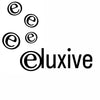As Supreme wraps up its SS23 season, much of the fashion press is swirling around the same subject: is Supreme dead?
There are many articles that detail Supreme’s 29 years of history, so we won’t dive into that here. But to assess the brand’s legacy it’s necessary to recognize the innovations it has made in the fashion space.
While Supreme was not the first to employ the ‘drop’ model, they are certainly responsible for popularizing it to the extent that it’s being used today. Furthermore, Supreme pioneered the related concept of weekly micro collections that trained astute shoppers to constantly want and expect new items, becoming the modus operandi for every modern streetwear label.
In its heyday, Supreme also mastered the concept of making EVERY item seem exclusive in a way not even Hermes or Rolex can do. It was not about price, but access, notably a hallmark of true ultra-luxury. You needed to be in-the-know not only to own Supreme, but even to know how to buy it. Communities emerged discussing the best new items, what to buy, how to buy, etc. Information for the first time became widely and publicly available, giving rise to resell culture which further elevated brand status and provided endless organic, free advertising through social media and mainstream press. No amount of paid media campaigns could dare compete with a line of teenagers lined up around a New York block for hours in the freezing cold to “cop” something, anything from the new Supreme x The North Face collaboration.
People were astounded to learn that others were paying $800 for a cotton fleece hoodie. Afterall, the concept of “luxury streetwear” was still little more than an oxymoron, not a billion dollar segment. Now every luxury brand worth its skin has an $800 hoodie for sale and no one blinks an eye as Gucci and Balenciaga rake it in on basic screen prints.
So when was peak Supreme? Many would say it was 2017, when Supreme announced its sale to private equity firm The Carlyle Group (in fact, the FW17 collection actually included this Centerpiece Logo Hoodie featuring a funeral bouquet and the caption SUPREME: 1994-2017). Others would say 2019 when they closed their original Lafayette St store or 2020 when the brand was sold to VF Corp, truly making it part of the corporatized fashion world. By our estimates, Supreme reached its maximum hype around 2018. Fresh off the Supreme x Louis Vuitton collaboration, it seemed the brand could do no wrong. Supreme had literally conquered streetwear and collided right into the luxury world.
But of course, no rise lasts forever.
And this takes us to the current state of the Supreme brand. Spoiler alert: it’s not dead. It is merely navigating the cycle all successful brands endure. Many forget that nearly every European heritage brand we celebrate today was at one point (in the not so distant past) nearly licensed into oblivion: Gucci, YSL, Dior, Givenchy, Celine, all of them. Luckily for Supreme, their mastery of collaboration has allowed them to effectively ‘license’ their brand name through having it printed on everything from hand-poured Japanese wax candles to jet skis, while conveniently avoiding brand dilution by being the exclusive distributor of these items. Supreme is entering its phase as a Heritage brand – think along the lines of Ralph Lauren. Once the darling of the fashion industry, Ralph is no longer making all the headlines. But he’s selling more than ever, and his name is known and respected worldwide.
While Supreme’s sales may have slipped at the corporate level, their audience is larger than ever. And maybe at some point, we’ll see Supreme hanging on the racks at Macy’s and TJMaxx just like Ralph Lauren. But just like with other heritage brands, future generations will most likely come to covet older Supreme pieces to get that magic feeling of a bygone era. Just look at what old Ralph sells for.
And that’s why we felt this is the perfect time for us to share with you A Supreme Legacy: 500 pieces from Supreme’s golden era.
Dig through our archives and pick up a piece that makes YOU feel Supreme.






